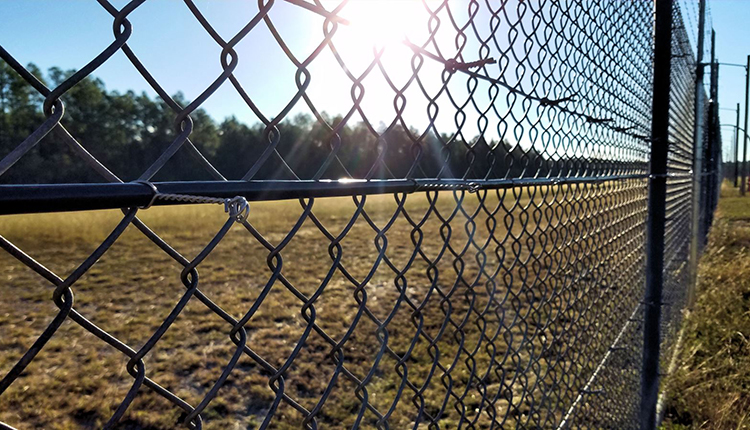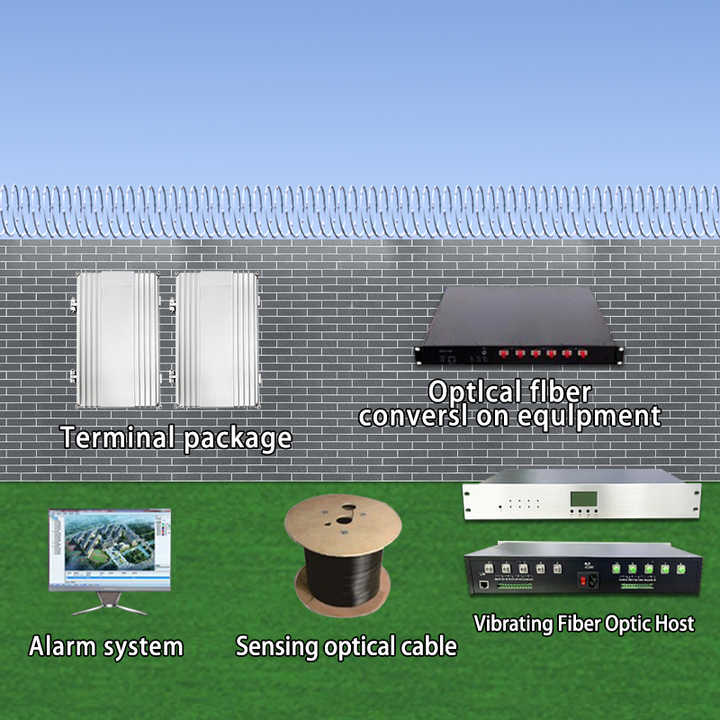Security Fibers: A Reliable Solution for Cutting-Edge Security Systems
Security Fibers: A Reliable Solution for Cutting-Edge Security Systems
Blog Article
Why Fiber Optic Safety And Security Solutions Are the Future of Security
The shift to fiber optic protection systems notes a substantial innovation in the realm of defense, driven by their exceptional information transmission capabilities and strength to external disturbances. As the landscape of safety and security evolves along with arising modern technologies such as AI and IoT, the potential for fiber optics to improve and redefine safety frameworks ends up being significantly obvious.
Advantages of Fiber Optic Systems
One of the key advantages of fiber optic systems is their superior bandwidth capacity, which promotes the transmission of large volumes of information over fars away without substantial loss. This characteristic is particularly helpful for safety applications that call for the constant monitoring and transfer of high-definition video clip feeds, sensing unit data, and other crucial information. Fiber optics can fit the growing demands of modern safety and security systems, guaranteeing that information remains undamaged and trustworthy.
Furthermore, fiber optic cables are much less at risk to electro-magnetic interference, which can be a significant problem in settings with different electronic devices. This resistance enhances the stability of the data being sent, thus minimizing the risk of data violations or system failings. Fiber optic systems are naturally more secure than standard copper cords, as touching right into a fiber optic line without discovery is exceedingly difficult.
The durability of fiber optic cables likewise adds to their appeal. They are immune to ecological variables such as dampness and temperature variations, minimizing maintenance expenses and boosting system long life. Generally, these benefits setting fiber optic systems as a durable and efficient option for modern safety infrastructures, making sure trusted and secure information transmission.
Boosted Information Transmission Rate

The capacity to transfer large quantities of information promptly facilitates the smooth combination of high-definition video feeds and advanced analytics. Safety systems can now process and evaluate information in real-time, boosting feedback times and situational recognition. Additionally, fiber optic links sustain longer transmission ranges without degradation of signal quality, making them suitable for extensive safety networks.
The enhanced rate of fiber optic systems not only enhances the efficiency of security operations however likewise decreases latency. This is especially essential in critical circumstances where timely decision-making can stop protection violations or mitigate prospective hazards. As organizations proceed to focus on safety and efficiency, the need for fast and dependable data transmission will definitely solidify fiber optic systems as a keystone of modern-day safety facilities.
Resistance to Interference
Fiber optic protection systems regularly show extraordinary resistance to electro-magnetic disturbance, a critical benefit in settings susceptible to electronic sound. Unlike standard copper cable televisions, which can be negatively influenced by electromagnetic fields, radio regularity interference, and various other types of electrical disturbance, fiber optic wires use light to transmit data. This inherent home makes sure that the signals remain clear and unchanged, no matter surrounding electronic task.
The usage of glass or plastic fibers in fiber optic innovation creates a barrier versus interference, permitting for trusted data transmission even in tough scenarios such as industrial facilities, metropolitan locations with high digital web traffic, or locations near radio towers. This characteristic dramatically decreases the possibility of signal deterioration or loss, making fiber optic systems specifically suitable for protection applications where honesty and accuracy of data are vital.
In addition, this resistance to interference enhances the overall efficiency and integrity of protection systems, ensuring that surveillance and alert systems function flawlessly. In a world where protection is significantly intimidated by sophisticated innovations, the resilience of fiber optic systems attracts attention as an essential function, strengthening their standing as a crucial element of modern-day protection framework.
Cost-Effectiveness Gradually
Substantial cost financial savings can be achieved over time with the execution of fiber optic safety systems. While great post to read the preliminary financial investment may appear greater compared to traditional copper-based systems, the long-lasting monetary advantages come to be obvious through decreased operational and maintenance costs (fiber security). Fiber optic wires are inherently more durable and much less susceptible to environmental elements, which equates to lower substitute and fixing costs over their life expectancy
Furthermore, fiber optic systems require much less power to operate, which better lowers energy expenses. Boosted data transmission capacities allow for less repeaters and amplifiers, decreasing devices financial investment and streamlining installment procedures. The scalability of these systems also adds to cost-effectiveness, as organizations can broaden their security facilities without incurring considerable added expenses.
Another factor to think about is the boosted performance in monitoring and action capabilities that fiber optics supply. Boosted real-time data transmission can bring about quicker event response times, potentially mitigating losses and responsibilities associated with safety and security breaches. Altogether, the lasting benefits of fiber optic safety and security systems not just warrant the first expense yet also place them as an economically sensible selection for click over here companies looking for durable protection services.

Future Advancements in Safety And Security
Progressing modern technologies are set to reinvent safety and security systems, integrating man-made knowledge (AI) and equipment learning to enhance risk discovery and reaction capacities. These innovations will enable safety and security systems to evaluate huge amounts of information in real-time, determining patterns and anomalies that indicate potential hazards. This aggressive approach will allow faster decision-making and more review effective case feedbacks.
In addition, the incorporation of the Web of Things (IoT) is leading the way for interconnected safety and security tools, supplying thorough security and monitoring. Smart sensing units can communicate info concerning environmental changes, while automated alerts can inform protection employees immediately of dubious activities.
Furthermore, the evolution of biometric innovations will certainly better boost safety and security devices. Facial recognition, finger print scanning, and retina recognition are coming to be a lot more advanced, giving layers of verification that are challenging to bypass.
Verdict
To conclude, fiber optic security systems stand for a considerable innovation in security technology, offering unmatched data transmission rate, resistance to electro-magnetic disturbance, and long-lasting cost-effectiveness. As the need for advanced security options continues to expand, the combination of optical fiber with emerging modern technologies such as AI, IoT, and biometrics will further improve security facilities (fiber security). The combination of these developments will certainly make certain a much more secure and receptive setting, solidifying optical fiber as a foundation of future safety and security systems
Report this page